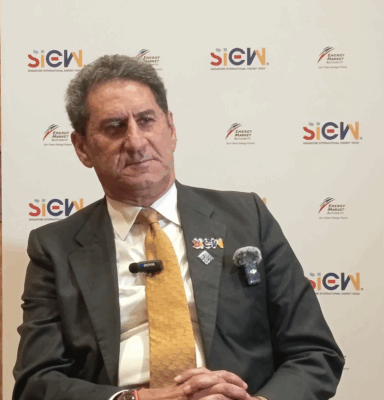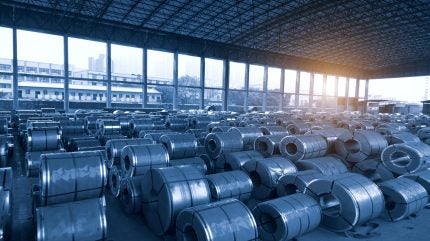Support CleanTechnica’s work through a Substack subscription or on Stripe.
The first day of the Singapore International Energy Week (SIEW) saw Francesco La Camera, the Director General of the International Renewable Energy Agency (IRENA), delivering a resolute address, emphasizing the unprecedented dominance of renewables in new energy projects and firmly asserting that the global energy transition is accelerating, not faltering.
Speaking about the progress and challenges toward a sustainable future, La Camera outlined key data points from IRENA’s latest budget report and offered a clear opinion on the future roles of fossil fuels and nuclear energy.
Renewables account for 92% of new capacity

La Camera shared compelling statistics to underscore the momentum of renewable energy adoption. He noted that in the preceding year (2024), the world added a record 518 gigawatts (GW) of new energy capacity, marking a 15% increase and bringing total global capacity to 4,443 GW. Critically, he revealed that 92% of all new power capacity added last year was renewable. The remaining 8% was “everything else.”
Looking ahead to 2025, he projected a new network addition of close to 700 GW of capacity, which he highlighted as “twice as much capacity as we have established in 70 years of movement.”
The IRENA Director General stated that these figures unequivocally demonstrate that a profound energy transformation is underway and will continue to accelerate. “We have never been so close as this year to put the ship in a pathway that is consistent with the achievement of the Paris Agreement,” he remarked.
Concerns on trajectory and investment gaps
In a separate interview with members of the ASEAN and Australian energy media, La Camera answered region-specific questions.
He first warned that despite the record growth globally, the current seemingly slow momentum in harvesting other forms of renewable energy, except solar, should not be mistaken for weakness. He indicated that the world is currently projected to fall nearly one terawatt (TW) short of the necessary 2030 capacity target. To stay on track, 1,100 GW of renewable energy annually between now and 2030 is needed — a pace nearly double today’s level.
He pointed out the deep unevenness in global progress, with Asia, Europe, and North America accounting for over 85% of installed renewable capacity.
Philippine renewable energy
Answering a question about the Philippine renewable energy growth, he said that though solar power will continue to be dominant due to ease of installation, availability of both land and extended sunlight, as well as financing, other technologies like wind, bioenergy, and geothermal must accelerate to maintain climate goals.
“The Philippines is a country rich in energy that can be harvested quite quickly and easily and the government has a clear plan to tap solar, wind, since there is a lot going on already with hydropower and geothermal,” La Camera told CleanTechnica. However, the larger problem is financing.
Regarding financing, La Camera acknowledged that 2024 saw a record $624 billion in global investment for renewables. However, he cautioned that annual investment needs to more than double between 2025 and 2030 to meet climate and energy targets. This, he argued, necessitates a new global financial architecture that embeds energy transition priorities and mobilizes public-private development risk in parallel investments.
Fossil fuels and nuclear
La Camera’s commentary on the energy system and the role of fossil fuels was clear: the future is a humanitarian system largely based on renewables.
He recalled that various global crises, including the pandemic and the subsequent energy crisis, had repeatedly led some to suggest the energy transition was slowing down. La Camera firmly countered this narrative, stating that the energy crisis actually proved that a “centralized energy system based on fossil fuels doesn’t ensure energy security.” In contrast, he posited that energy security is better achieved through a distributed system, which renewables facilitate.
When asked about nuclear, La Camera threw a question back. “How many small modular reactors have you seen operating? Maybe two? The technology exists but is it widespread enough?”
Nuclear power is not on IRENA’s agenda, which is centered only on renewables such as solar, wind, geothermal, hydro, bioenergy, and ocean energy. Early statements from the agency’s interim Director-General, Hélène Pelosse, views nuclear energy as a “long, complicated process; it produces waste and is relatively risky,” including concerns about large-scale accidents, waste management, nuclear proliferation, and high water consumption.
IRENA promotes renewable energy as a faster, less expensive, and more sustainable alternative to fossil fuels and nuclear power, offering enhanced socio-economic and environmental benefits. The agency’s reports and initiatives, such as those from the IRENA Coalition for Action, outline pathways to achieving a 100% renewable energy system by 2050 and call for clear fossil and nuclear phase-out strategies to meet global climate targets.
While IRENA does cooperate with the International Atomic Energy Agency (IAEA) in general energy planning. This is to enhance the effectiveness of capacity-building efforts by leveraging the complementary competencies of both organizations, not to promote nuclear energy itself.
The IRENA chief concluded that the future system will be largely renewable, “complemented by hydrogen, maybe green, and the sustainable use of biofuels, bioenergy, biomass.” The overwhelming data showing that the majority of new power capacity is already renewable serves as his ultimate proof that the transition is happening, it’s accelerating, and it will continue.
Sign up for CleanTechnica’s Weekly Substack for Zach and Scott’s in-depth analyses and high level summaries, sign up for our daily newsletter, and follow us on Google News!
Have a tip for CleanTechnica? Want to advertise? Want to suggest a guest for our CleanTech Talk podcast? Contact us here.
Sign up for our daily newsletter for 15 new cleantech stories a day. Or sign up for our weekly one on top stories of the week if daily is too frequent.
CleanTechnica uses affiliate links. See our policy here.
CleanTechnica’s Comment Policy




